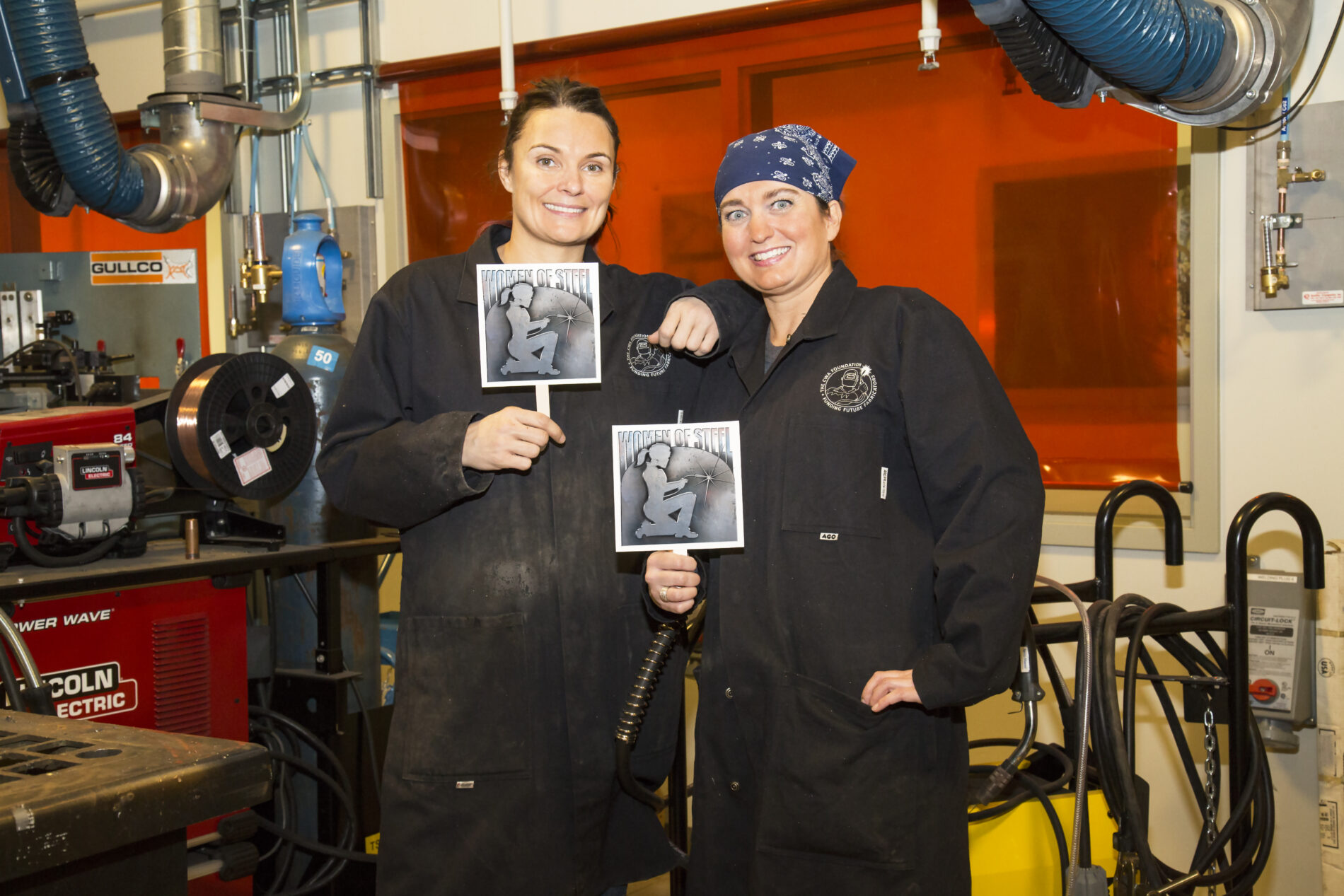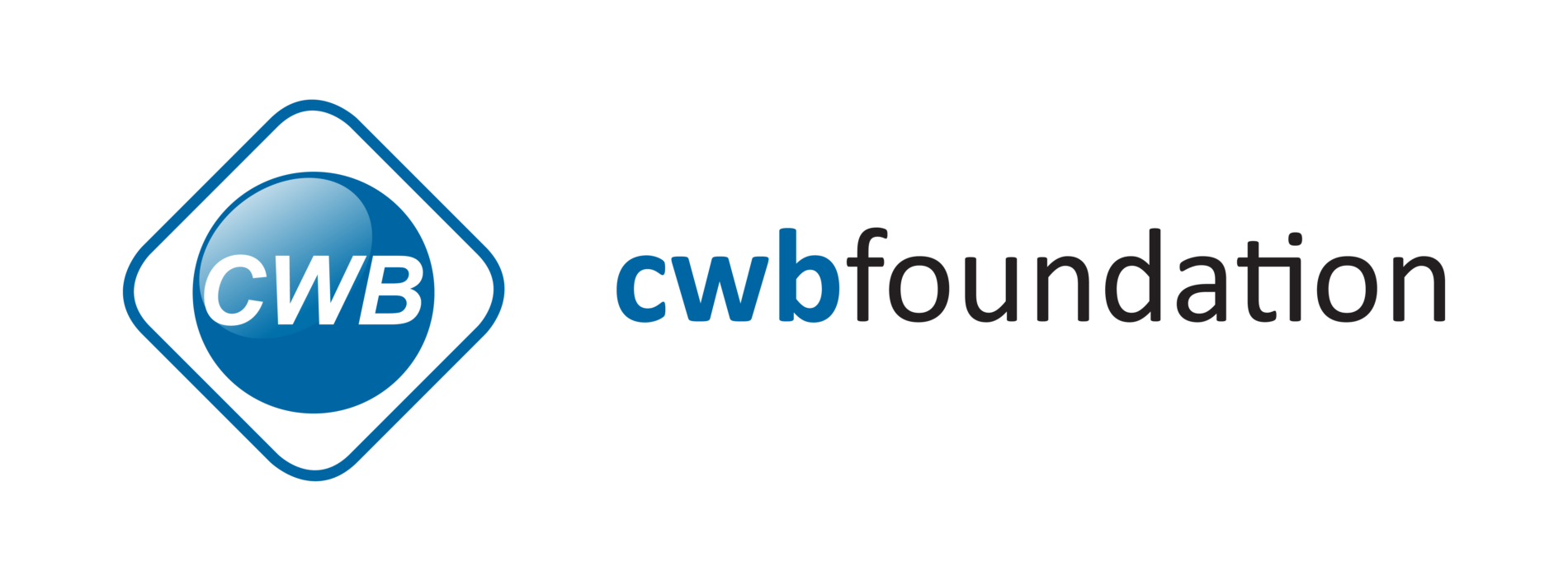
The CWB Welding Foundation is a proud supporter of Skills Canada’s National Competition. Originally, we had planned on hosting a special breakfast at the National Competition that would feature an intimate and interactive conversation with women welders. Of course, the COVID-19 pandemic forced Skills Canada and the Foundation to take a different approach. So instead of an in-person event, we are finding other ways to share the insights and perspectives of women welders, and to inspire other women to explore welding as a potential career. Here, Maria Hypponen, Communications Specialist with the CWB Welding Foundation, hosts a Q&A session with Jill Timushka, who was scheduled to speak at the original “Trailblazers and Torchbearers” breakfast.
Maria Hypponen: Jill, thank you so much for being part of our “Trailblazers and Torchbearers” initiative. Tell us about yourself and your current role.
Jill Timushka: Thanks for having me! I’m a journeyman-certified b-pressure welder from Alberta, Red Seal endorsed. I’ve been in the trade for over 20 years now, and I’ve worked in many aspects, many different areas of the welding trade. I’ve spent most of my career in the industrial sector. I’ve worked in commercial, I’ve been an instructor, and I even owned my own onamental ironwork business. Right now, I’m filling in as the National Manager of Youth, Diversity and Indigenous Relations with UA Canada. I’m also a committee member of Built Together—the Women of the Building Trades of Alberta.
MH: What motivated you to pursue a career in welding?
JT: My career started when I was about 24, when I tried welding with my dad and I liked it immediately. We got my apprenticeship started right away, and before I knew it, I was journeyman certified. That’s when I really got to dig my heels into the welding trade. I got my b-pressure certification not long after that, and the rest is history.
MH: Was welding your first choice?
JT: When I left high school, I became a waitress, and as much as I enjoyed that at the time, I knew I didn’t want to do it for the r est of my life. So when I was looking at changing my career, I went and talked to my mom about it. My mom always told me and my sisters that we could be whatever we wanted to be for a career choice. When she suggested me trying welding, I shouldn’t have been surprised, because her father and grandfather are welders, my father is a welder as well. I got to try it with my father and I loved it immediately. My only regret really is not trying it sooner.
MH: What do you find most rewarding about welding?
JT: When asked to choose one favourite thing about the welding trade, that’s so hard to do, there’s so much to like! It’s really cool to be able to take two pieces of metal and make them become one using intense heat and hand skill—that’s pretty awesome. And it is a lot of fun making the sparks fly. Also knowing that what you’ve created, what you’ve built— whether it’s pipe or a structure or anything, a vessel even—if you know that is going to be in the facility for many years to come, possibly many generations
to come, that’s really fulfilling. It’s really something to be proud of. And I’m really happy to be a part of all the projects I’ve been a part of the last 24 years.
MH: What is the most interesting project you have worked on?
JT: I think one of the most inter esting aspects or projects that I’ve been a part of are the many plant shut-downs, or turn-arounds, that I’ve worked on over the years. A plant shut-down is when a plant site will shut down for a period of time, perhaps a month or two, and they hire a whole bunch of tradespeople, up to a hundred or more, to come in and disassemble some pieces of equipment, do necessary repairs, and put it all back together again. As a tradesperson going to these jobs, you work very long days for
many days in a row, you take a few days off and then you do it all over again until all the work is complete. But you meet a lot of interesting people, from a lot of different trades. You get to work for a lot of different companies as well, and you get to maybe travel a little bit for these jobs. You get to see a lot of the plants that you wouldn’t normally see. They take the equipment apart so you get to see the insides, you get to see bundles being pulled out of exchangers, you get to see the insides of vessels and piping. And sometimes you even get to replace these pieces of equipment so you get to work with crane operators, and all kinds of fun things. That is probably my favourite aspect of the trade.
MH: What was the biggest challenge of your career? And how did you overcome it?
JT: I think the biggest challenge of my career as a tradeswoman would have to be being the first or one of the first women on the job sites and having to prove to my coworkers, and the contractors, the companies, that women can do the job just as well and they need to hire more tradeswomen on these job sites. It’s very important to prove your worth when you’re there. I think that another challenge that a lot of tradeswomen face, and I’ve faced it as well, is childcare facilities. I’m a single mom. I couldn’t find childcare facilities that would be open early enough for my shift so I had to improvise and work around this. I think this is still an issue to this day and I strive to help improve that. We need to look at this on a national level, and we need to correct this for future tradeswomen and tradesmen. It’s an issue across the board.
MH: How important is continuing education in your career?
JT: It is important to continue to educate yourself once you’ve got your journeyman certification. You can always sharpen your skills and learn the new processes that are coming out. There are always new types of steel that you can learn how to weld too, like stainless steel, aluminum and chrome-moly. There are also different industries that you can get into like fabrication shops, plants sites, pipelines, aircraft facilities and hospitals. There are many areas of the welding trade as well, like commercial, structural, industrial, and manufacturing. The job possibilities for welders go on and on. We’re not just limited to building piping, vessels and structures. We can build planes and helicopters, restaurant equipment. We can work in essential piping for hospitals and clinics as well.
MH: How would you suggest someone should prepare themself for a career in the metal trades?
JT: If someone is looking into trying the trades, there are usually programs at local colleges or local unions where you can go in and try several different trades and see what you’re interested in. I know the CWB Welding Foundation’s Women of Steel initiative has driven programs across the country for women to try welding. I was lucky enough to go and speak to two groups that were learning welding here in Alberta through that program, and they were very excited to be a part of it. Also, you might have a high school program that you can try welding or piping trades—or any of the trades, honestly. I would give it a go for sure. I didn’t have that option when I was in high school and I really wish I had. I think it would have been a game-changer for me.
MH: How important is it to maintain a strong network of mentors, mentees, and other people as you progress in your career?
JT: It’s always good to maintain a strong network of mentors. I tell all apprentices to work with the older generation of tradespeople as much as possible. These are seasoned workers and they can teach you so much that you won’t learn in a classroom. I tell them to be sponges and just absorb as much information as they possibly can. When you’re a mentor yourself, you become someone other welders can turn to. As women welders, we need to make ourselves available for other tradeswomen to reach out to, as this is one of the best ways to keep women in the trades.
MH: What piece of advice do you wish you could give yourself in high school?
JT: If I were to give my younger self any advice, I would say to try trades in high school, and get the career started a lot earlier. It’s never boring, it’s fun. It’s always interesting, and the pay and benefits have allowed me to live a very good life.
MH: Any final thoughts you’d like to share?
JT: If there are any women out there considering a career in the trades, please try it. Get yourself into a welding shop with a welder friend or a welding program. If you decide it is your career of choice, get your apprenticeship started, and before you know it, you’ll have your ticket in your hand. You will enjoy the journey of exploring the many aspects of the welding trade, believe me. Stay safe. Have fun, and let sparks fly.
Maria Hypponen, Communications Specialist, CWB Welding Foundation
Originally published in WELD Magazine, Fall 2020.
